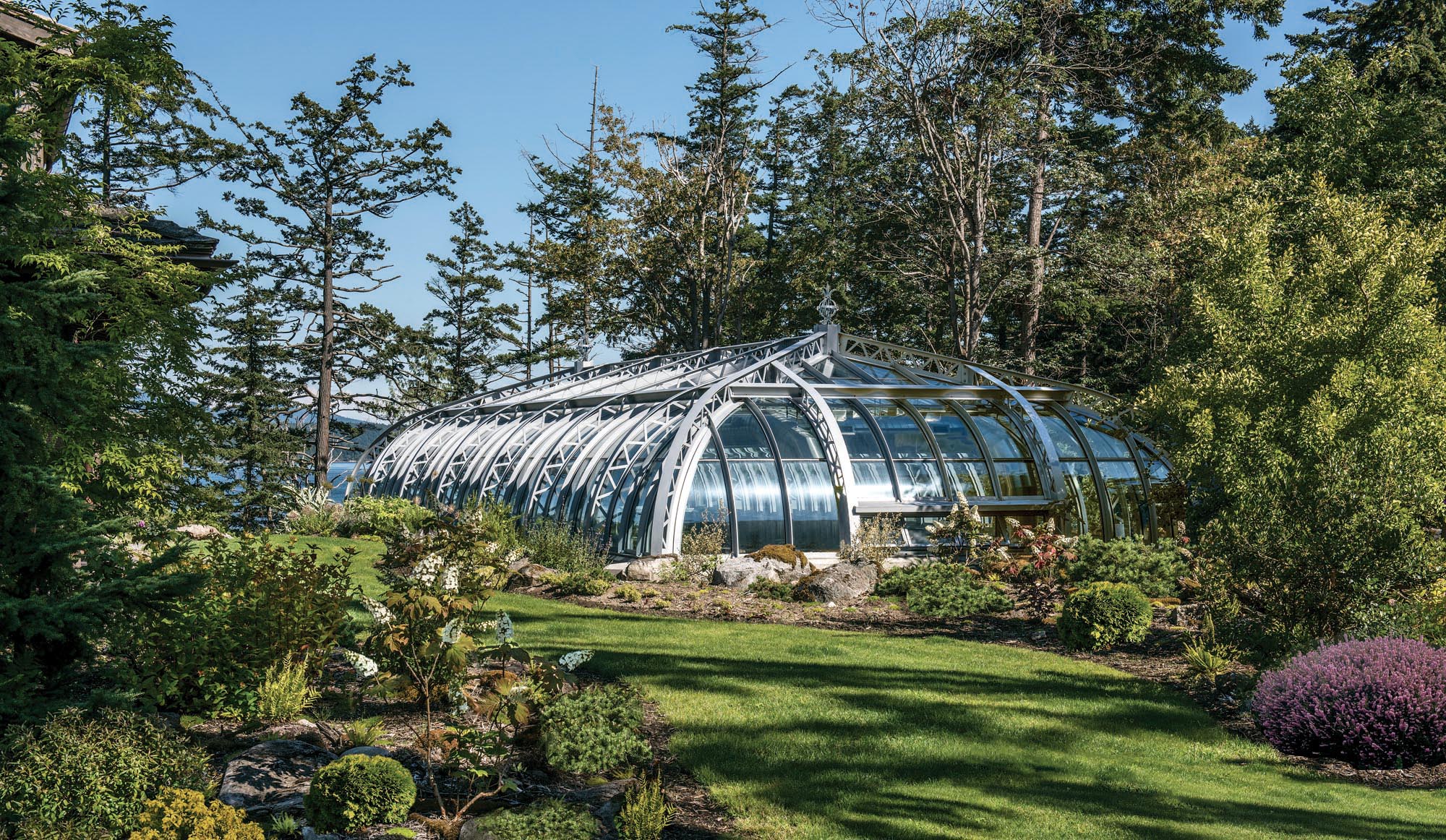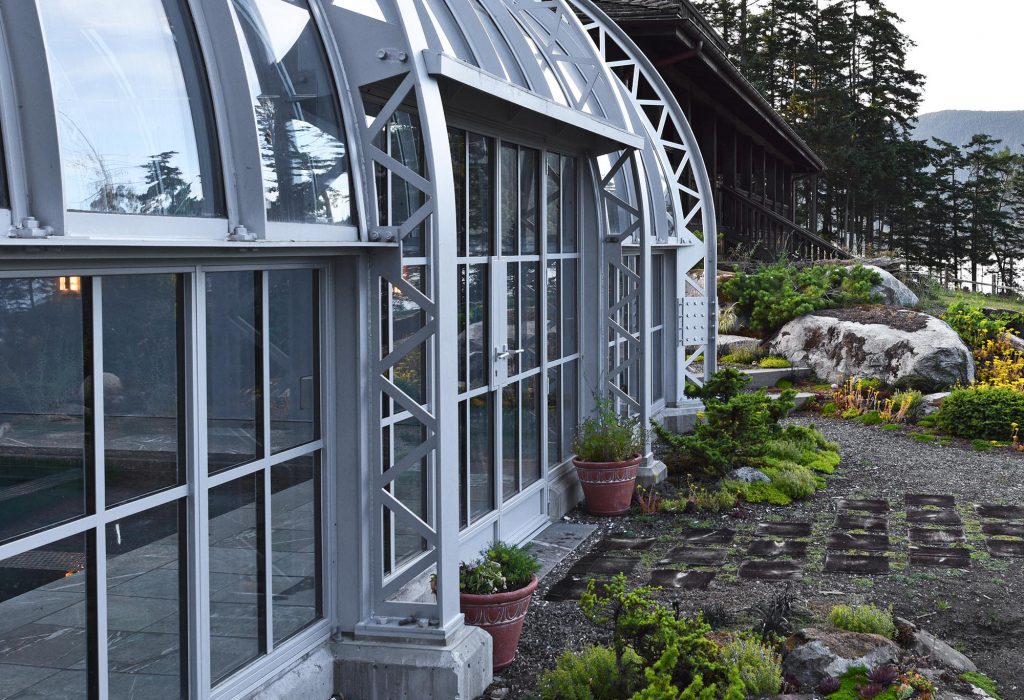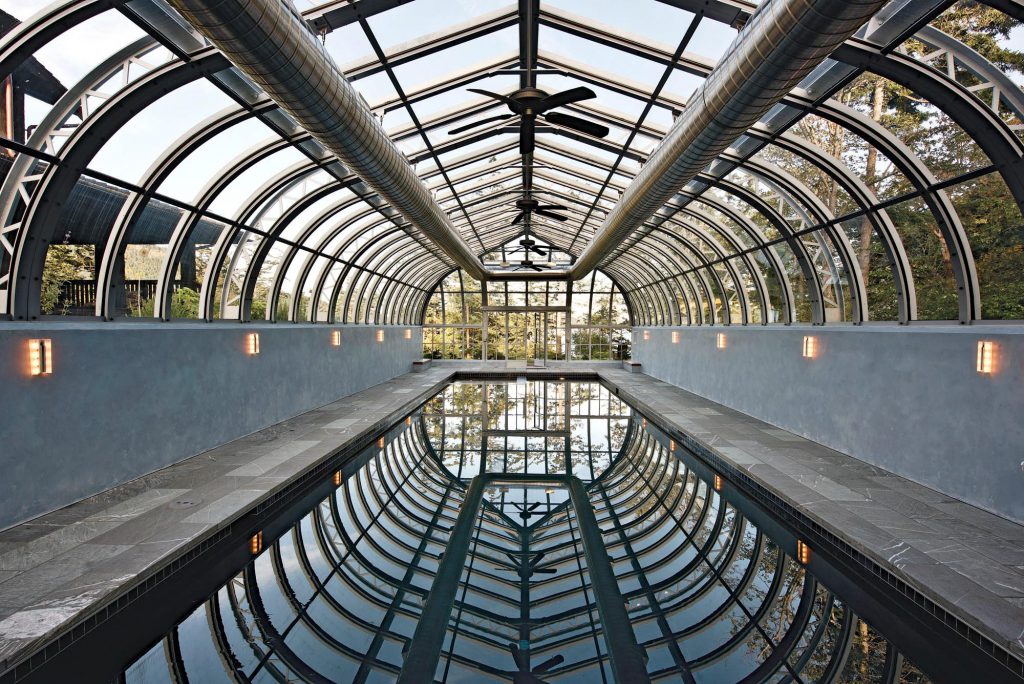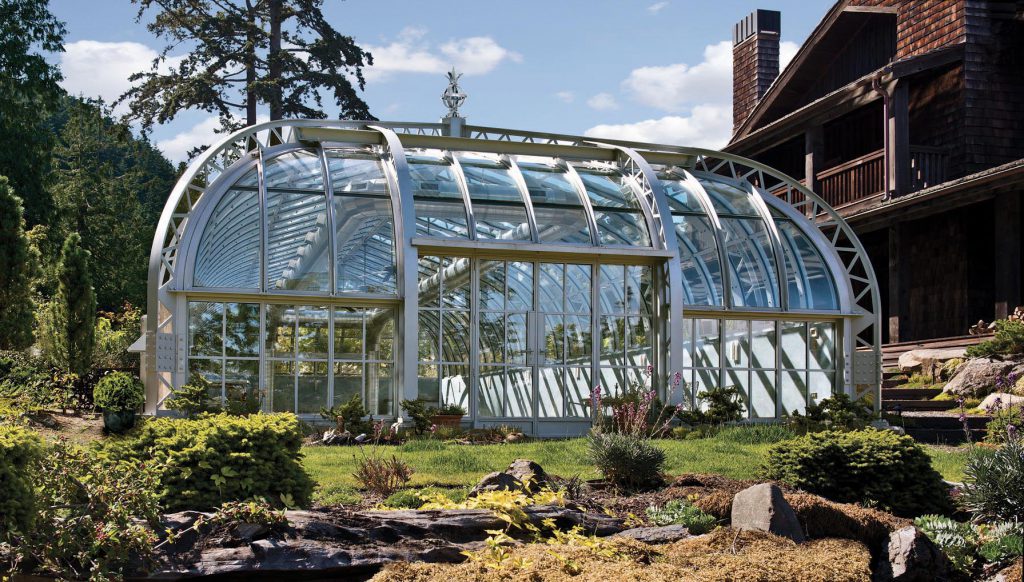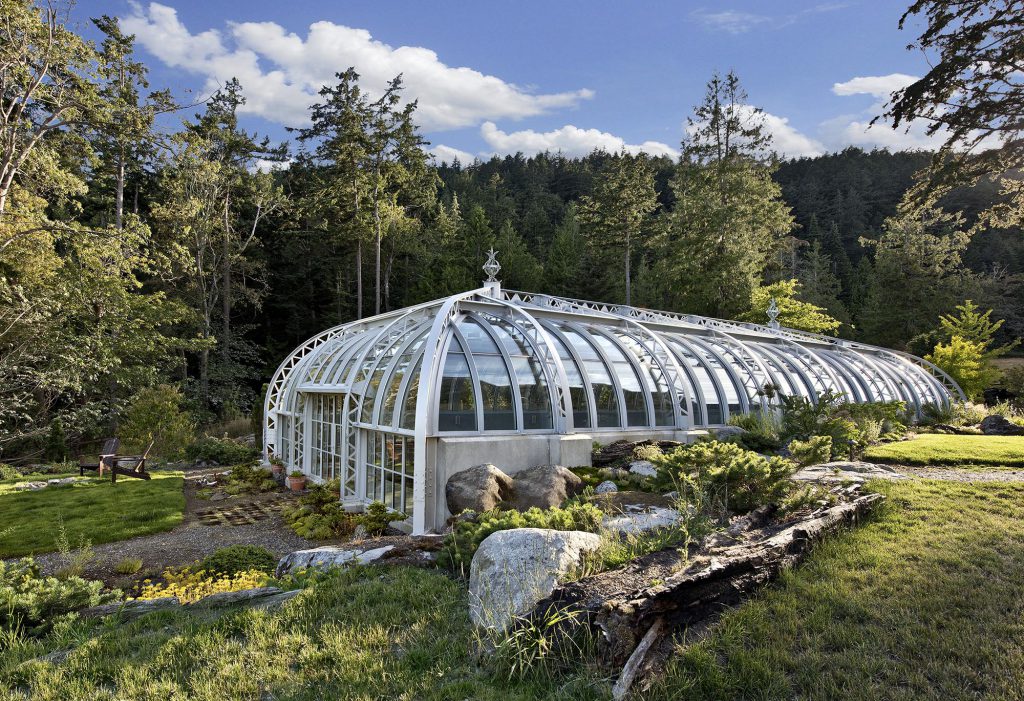It is not every day you get to build a glass structure into the side of a rocky landscape, but it is always a challenge our team looks forward to…
Along the rugged and picturesque coast of the Pacific Northwest, a visionary couple dreamed of creating a unique sanctuary—a glass conservatory that would embrace the landscape and echo the elegance of a bygone era. Captivated by the beauty and ingenuity of early glasshouse architecture, they were inspired by the pioneering spirit of nineteenth-century engineering and wanted their pool enclosure to pay homage to the Victorian-era conservatories that were the first to exploit new materials and techniques from the Industrial Revolution.
They approached Tanglewood Conservatories with their dream, sharing their fascination with structures like the Schönbrunn Palace palm house in Vienna. Their vision was clear: they wanted to blend the historical charm of these architectural wonders with the sleek elegance of modern design. We eagerly accepted the challenge.
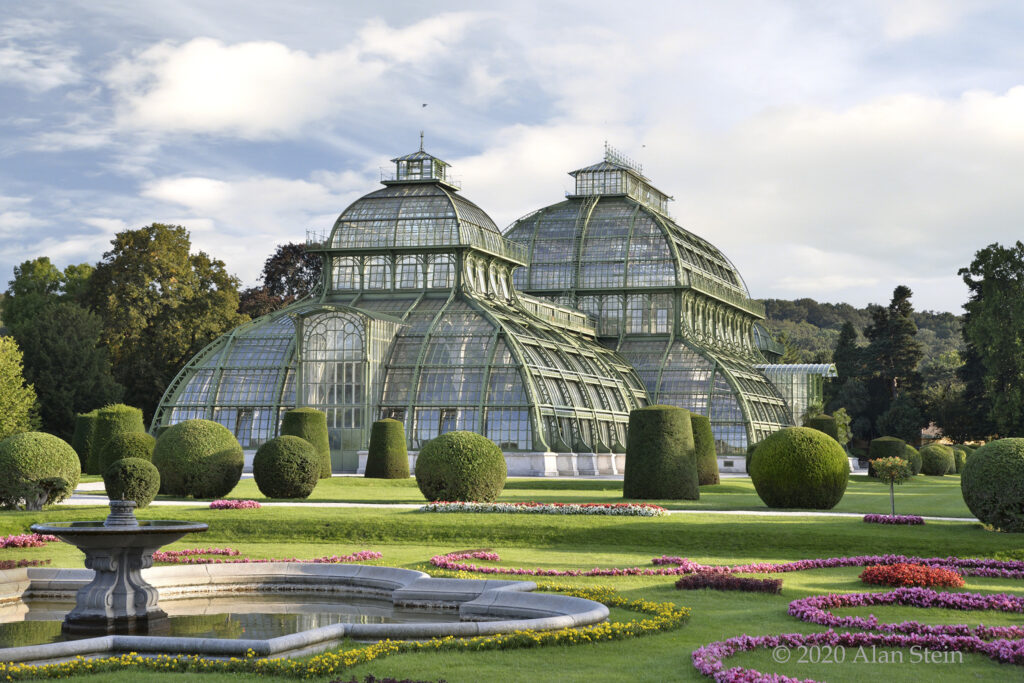
Putting pencil to paper, our Sr. Designer crafted a design that embodied the couple’s vision—a steel exoskeleton reminiscent of historical glasshouses, supporting a delicate glass skin that would reflect the tranquil landscape. Articulated trusses suspended the glass panels, creating a seamless and uninterrupted interior surface that housed the serene pool.
As the conservatory took shape, it became a true fusion of old and new. The use of steel and glass, once revolutionary in the Victorian era, now symbolized contemporary architectural prowess. The structure stood as a testament to the enduring legacy of glasshouse architecture, celebrating both history and innovation.
When the project was complete, it was more than just a structure; it was a meditative space that invited visitors to experience the tranquility of nature intertwined with the precision of engineering. The glass pool enclosure became a modern expression of a timeless craft, embodying the couple’s dream and Tanglewood Conservatories’ commitment to creating extraordinary spaces.

